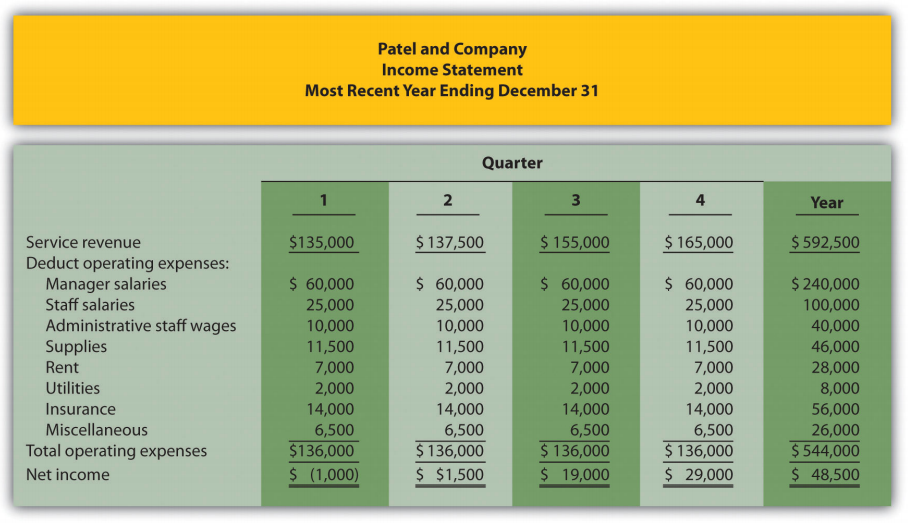94 11.6: Budgeting in Non-manufacturing Organizations
-
Last updated
- Dec 28, 2020
Learning Objectives
- Describe operating budgets for merchandising, service, and not-forprofit organizations.
The examples used thus far to describe a master budget have been limited to manufacturing companies. Manufacturing companies tend to have comprehensive operating budgets and therefore serve as a good starting point in learning how to develop a master budget. However, all types of organizations use operating budgets.
Merchandising Organizations
Question: What do operating budgets look like for merchandising organizations?
- Answer
Service Organizations
Question: What do operating budgets look like for service organizations?
Not-for-Profit Organizations
Question: Not-for-profit organizations, such as school districts and charitable organizations, also use budgets for planning and
Business in action 11.3 – Budgeting at a Not-for-Profit Organization
Yearly, a small not-for-profit symphony in California establishes an operating budget with revenues totaling $200,000. The symphony’s treasurer oversees the budget committee, which is made up of three board members. The budget committee is responsible for creating, approving, and monitoring the budget.
The budget committee begins the budgeting process by reviewing information from the year before. All board members and office staff are given spreadsheets showing last year’s results and are asked to provide input for the next budget period. For example, the committee responsible for ticket sales estimates sales revenue based on expected ticket sales times the average sales price. Anticipated increases in sales price are considered in the sales budget.
Expenses are also budgeted based on last year’s actual results. Those requesting increases in budgeted expenditures must justify them. Once revenues and expenses are established for the next budget period, the bookkeeper enters the information using QuickBooks software and prints a preliminary budget report, which the budget committee reviews. Once the budget committee has balanced the budget, reviewed it for reasonableness, and approved it, it goes to the board of directors for approval.
The control phase of the budgeting process requires that all expenditures be in accordance with the budget. Any expenditure exceeding the budget by more than $25 must be approved by the board of directors. A financial report comparing actual revenues and expenditures with budgeted revenues and expenditures (produced using QuickBooks software) is submitted to the board of directors monthly.
Key Takeaway
Merchandising organizations do not produce goods, and therefore do not have production or production-related budgets. Instead, merchandisers prepare a merchandise purchases budget. Service companies do not have production or merchandise purchases budgets. Instead, service organizations focus on projected sales and labor costs. Not-for-profit organizations also use budgets for planning and control purposes. The format depends on the service being provided.
Review problem 11.8
Patel and Company performs accounting services for its customers. The company had the following net income for the most recent year:

The following information was gathered to help prepare next year’s budgeted income statement:
- Service revenue will increase 10 percent (e.g., first quarter service revenue for next year will be 10 percent higher than the first quarter shown previously).
- Manager and staff salaries will increase 5 percent, and a new staff accountant will be hired at the beginning of the second quarter at a quarterly salary of $12,000.
- Administrative staff wages will increase 10 percent.
- Supplies and rent will remain the same.
- Utilities will increase 5 percent.
- Insurance will increase 25 percent.
- Miscellaneous expenses will decrease 10 percent.
Prepare a quarterly budgeted income statement for Patel and Company; include a column summarizing the year.
- Answer
-
Definition
- An estimate of the units of merchandise to be purchased and the cost per unit.


